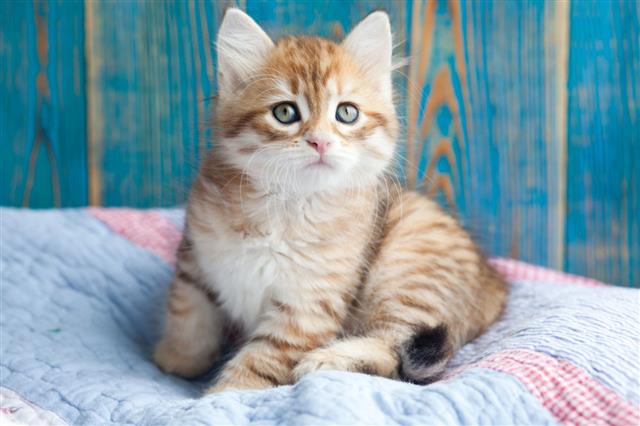
Cats are vulnerable to skin infections. They may develop sores anywhere on their body. This CatAppy post has information on common causes of cat sores and how to cure them.
If you spot sores or lesions on your cat’s skin, it is advisable to take her to the vet for a checkup. This skin problem could be the result of an infection, which is why it is essential to ascertain the underlying cause. Common causes of sores in cats include injuries, scratching, ringworm infection, and insect bites. Since the risk of secondary bacterial infection is high, affected cats may have to be administered antibiotics to lower the risk. Some infections may be contagious, requiring complete sensitization of the environment, as well as other preventive measures.
Sores on Neck
- Symptoms
If your cat has sores on the neck then you might see him scratching the area quite often. This can lead to bald patches, with redness around the area. Apart from this, you may observe changes in the cat’s behavior―he may seem increasingly irritated.
- Causes
Ringworm or sores on neck are caused by microscopic parasitic fungi known as spermatophytes, which live on dead skin cells, hair, and claws. Being contagious, the infection can be contracted either by direct contact with other infected cats or when exposed to an unhygienic environment. Kittens and senior cats are vulnerable to this infection, as they lack the required level of immunity to counter it. Other causes of neck sores include flea infestation and tick bites. These bites cause itching and irritation of the skin. Lesions due to tick bites may cause secondary bacterial infection in cats. - Treatment
Ringworm-infected cats can be given antifungal drugs. Flea and tick infestation can be cured with the usage of medicated shampoos.
Sores on Chin
- Symptoms
In this case, acne on the chin appears in the form of black marks, further developing into red itchy bumps causing skin irritation. - Causes
These sores can be caused by food allergies or allergic reactions to materials a cat comes in contact with, while eating. For instance, feeding your cat from a plastic dish might cause her to develop an allergic reaction to plastic. - Treatment
The treatment for chin acne includes repeated cleaning with antibiotics or antifungal soaps. Antibiotic ointments and oral medications are recommended treatment options.
Sores on Lips
- Symptoms
Eosinophilic ulcer also known as rodent ulcer is seen as small sores on the cat’s upper lip. Linear granulomas is occasionally seen on his lips, tongue, and hard palate areas. They are elongated lesions that are reddish-yellow in color. Hair loss in cats is a commonly observed symptom in case of linear granulomas. These sores do not itch at all.
- Causes
Eosinophilic ulcer and linear granulomas could cause sores on lips in cats. Continuous licking of these ulcers may enlarge their size, intensifying the infection. If these lesions are not treated in time, they can increase in size and extend to the entire upper lip. - Treatment
Treatment for sores on lips include injections with anti-inflammatory drugs and long-term antibiotic therapy. Injections are given every two weeks till the sores completely subside.
Sometimes sores are also treated with hormone treatments which can have serious side effects. Hormonal treatment should be done only under the strict guidance of a veterinarian.
Home Remedies to Treat Sores on the Body
- To prevent the infection from spreading, you can wash the area with warm water and medicated soap.
- You can sprinkle diatomaceous earth (DE) on the cat’s bed or carpet. You may also brush it through his fur.
- Including vitamin E and fish oil supplements in your cat’s diet is also a good measure against sores. Vitamin E has anti-inflammatory properties, and fish oil is an antioxidant, which help cure the infection easily.
- You can include yogurt in your cat’s diet, as the probiotics present in yogurt help cure the sores sooner.
It is your responsibility as a pet owner to take notice of the slightest of symptoms that may be indicative of a disease. You should also pay attention to your cat’s diet as contaminated food could be the culprit. Also, do make use of flea and tick control methods, thus ensuring a hygienic and healthy living environment for your cat.













